Share
526 shares
Endurance and stamina are incredibly important for runners.
The ability to run for longer without getting so tired is an important skill to master.
It pays off to be patient and consistent when it comes to training for longer distances.
Whether you’re building up to a 5k, 10k, half marathon or marathon, the key is to gradually build up the time and distance in which you can comfortably run without getting tired or out of breath.
Likewise, if you’re new to running, then you may be thinking how you can run for longer without getting so tired.
It may seem an unachievable goal right now, but with the right mindset, training and practice, you will get there.
Whatever stage you’re at, this guide will offer actionable tips to help you run for longer without getting so tired.
In this guide, we’ll explore:
Ready?
Let’s go!
You may be asking yourself: “Why do I get tired so easily on runs?”
It’s common to experience short periods of tiredness and fatigue when running and in between runs, especially after a long or demanding run.
You may struggle to breath when running, or you may have that heavy legs feeling on a run.
Here are some common causes of tiredness and fatigue:
#1 Lack of sleep
A healthy sleep routine will go a long way to help you feel more refreshed not only on a run, but in your daily life.
According to a 2017 study, chronic sleep deprivation has been shown to increase the risk of a host of physical and mental illnesses.
The study added that sleep deprivation costs the healthcare system billions of dollars annually.
Aim to get between 6 to 8 hours of sleep per night and practice good sleep hygiene.
#2 Lack of adequate recovery time in between runs
Overtraining is a common problem in the running community.
Overtraining boils down to ineffective recovery in between runs on a repeated basis.
So if you’re currently going through an unexplained dip in performance, or you regularly feel tired and fatigued on your runs, you may be experiencing Overtraining Syndrome (OS).
The important thing is to recognise the signs and symptoms of Overtraining Syndrome before it gets any worse.
#3 Insufficient fuel intake
Food and nutrition play an integral role in all forms of exercise, not just running.
You can think of your body as an engine – simply put if you don’t give it the right type of fuel and the right amounts of fuel, it won’t be able to perform at a high level.
Aim to get the right amounts of carbohydrates, protein, healthy fats and vitamins and minerals in your diet.
#4 Poor nutrition
If you’re used to eating processed foods and consuming sugary drinks and you regularly feel fatigued on your runs, then it’s a sign you need to review your eating habits.
Poor nutrition is a common cause of tiredness and fatigue.
Aim to eat a healthy, balanced diet that supports the needs of your body.
#5 Stress and anxiety
Whilst exercise like running has been shown to improve your mood and ease symptoms of stress and anxiety, poor mental health can have a negative affect on athletic performance.
People with anxiety tend to be more sedentary and do less intense forms of physical exercise, if any.
#6 Hormone imbalance
According to a study on the role hormones in exercise physiology, excessive or inadequate levels of several hormones place constraints on exercise performance.
Various studies have shown the importance of hormones and the endocrine system when it comes to exercise capability.
If you have dysfunctions in your thyroid, adrenal and pituitary glands, for example, this may induce specific disorders of the neuromuscular system which could lead to tiredness and fatigue.
If in doubt, speak to your healthcare professional.
#7 Iron deficiency
If you regularly experience periods of tiredness and fatigue, then seek help from a healthcare professional as it could be down to an underlying cause such as an iron deficiency.
Many tests can be performed nowadays to identify underlying causes of tiredness and fatigue, with blood tests being one of them.
Related: 6 tips for successfully running with a chronic illness
#1 Build your endurance and stamina
In order to run for longer without getting so tired, you need to build up your running endurance and stamina.
The golden rule to increase running stamina and endurance is consistency.
This means making running a regular habit and training consistently and progressing at regular intervals.
By training consistently, you increase your aerobic capacity (also known as your VO2 max or running economy) and strengthen your muscles.
In terms of progression, your mileage should increase by 5-10% each week to avoid training overload.
If you do all of these things, you can expect to see a improvement within 2 to 3 months.
Related: How to increase running stamina and endurance
#2 Increase your speed
Running speed is something that many runners look to improve once they have achieved a good base level of fitness.
Speed training like interval training and tempo running are a great way to build your speed, endurance and stamina.
According to a 2020 study on training and physical performance in recreational runners, training sessions that include continuous exercise performed at both low and high intensity levels are beneficial for running performance.
The study added that sessions of variable intensity represent the training methods most often used to improve performance in endurance competitive events.
When it comes to running faster, remember that speed should always follow endurance.
In other words, work to increase your running stamina and endurance first before you focus on improving your speed.
Here are two example speed training sessions:
Interval training
Interval training is basically alternating periods of high-intensity effort (fast running or sprinting) with periods of low-intensity effort (slow running or walking).
A typical interval training session lasts anywhere between 5-30 minutes.
Here is a sample interval training workout:
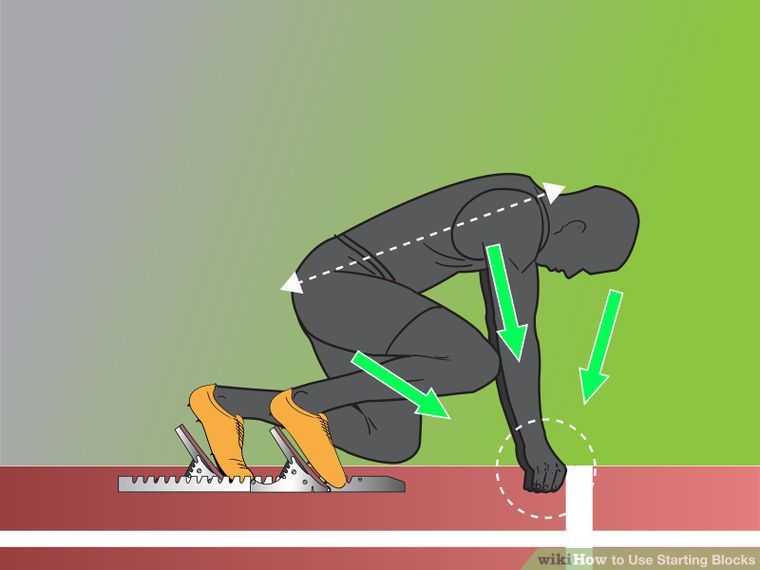
Tempo running
A tempo run, also known as a ‘threshold’ run, is a pace about 25 to 30 seconds slower than your 5k race pace.
It is designed to be a challenging pace, but not so much that you’re full out sprinting.
Here is a sample tempo running workout:
Related: 6 interval training benefits for runners
Now you know how to run for longer without getting so tired, here is a sample endurance and stamina training plan.
Begin by adding extra runs into your training plan each week.
The key here is to include easy and long runs first, then graduate onto more speed focused sessions like interval training.
Strength training can also be added to help improve running performance.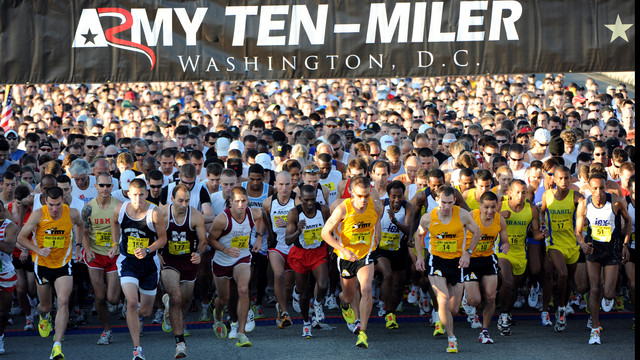
Weeks 1 to 4
Weeks 5 to 10
Most half marathon and marathon training plans will build up distance slowly over a matter of weeks, but you should increase your running time by 5-10 minutes or add 0.5 to 1 mile each time.
Don’t progress more than 5-10% each week otherwise you risk training overload.
You should also run at a conversational pace, in other words, don’t overdo it! It should be easy to hold a conversation without getting out of breath.
Many runners try to complete a long run too fast and end up struggling at the end or, even worse, end up injuring themselves because it was too much too soon.
Remember that speed should always follow endurance.
Therefore you need to build a solid base of endurance before you can start tackling more challenging training sessions like intervals and tempo running.
#1 Remember to warm up
A warm up is integral to any race – whether you’re running a 5k, 10k or half marathon.
It tells your brain that you’re about to do some serious exercise and gets your muscles ready so they can perform at peak efficiency.
A warm up has three key objectives:
A good warm up should leave you energised but not tired. If you push it too hard you may risk injury or poor performance during your race.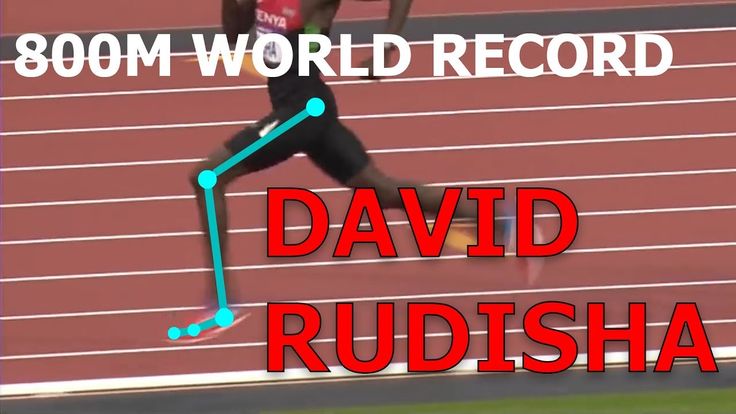
There are many versions of warm ups out there depending on race duration, your fitness levels and running experience.
At its core a proper warm up consists of three main parts:
Here are a few example dynamic stretches and running drills that you can perform before your run:
Dynamic stretches
Running drills
Related: How to warm up before a run
#2 Pace yourself
One of the challenges of longer runs is learning how to pace your run so you don’t tire yourself out too quickly.
You don’t want to run too fast, yet you don’t want to run too slow.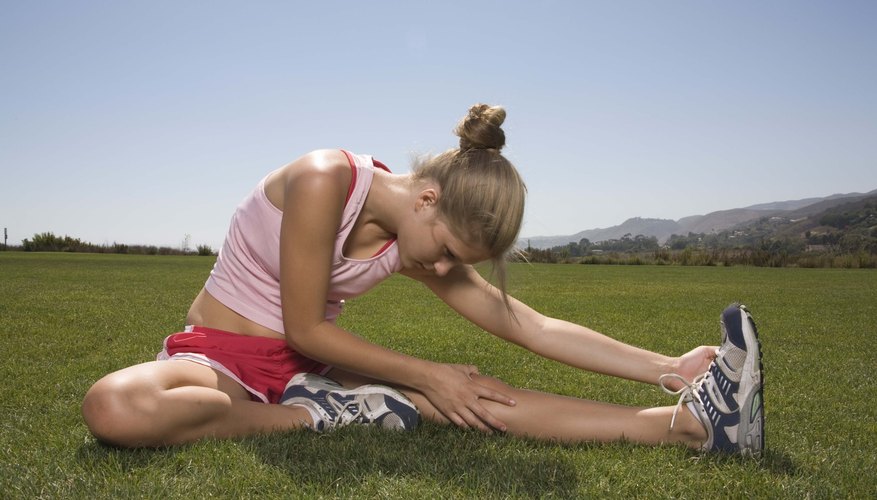
Pacing is all about experimentation. The more you run, the better you become judging your pace and whether you need to go faster or slower.
You will undoubtedly feel fresher at the start of a run so the temptation is to go fast from the get go, but you should try and avoid this.
Dependent upon the distance, your pace and effort will change. The first mile may feel like the slowest as your body warms up and gets used to the movement.
This is why a warm-up is so important for your run – you will soon get into your stride.
To really understand what pace you should be running at, use a running pace calculator to work out how fast (or slow) you should be running.
A pace calculator works by giving you your pace per mile for a given distance. Simply enter any two variables – pace, time or distance – and the pace calculator will determine your pace.
The Active.com pace calculator as it allows you to work out your pace using the variables above for a range of different distances.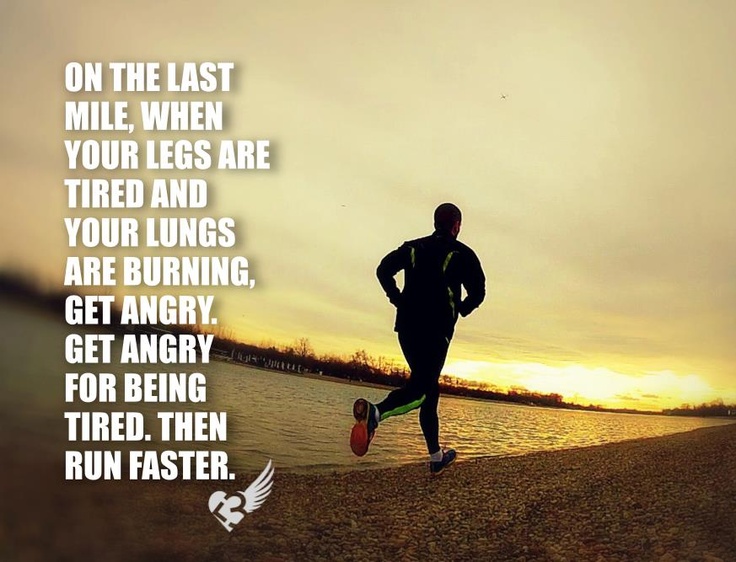
Related: How to pace your run
#3 Strength train
Strength training is not the most obvious choice for runners when trying to run for longer without getting so tired.
The fact is strength training makes you a stronger, faster and more efficient runner, as well as helping to prevent common running injuries.
The key to strength training for runners is to keep it simple.
Focus on strength workouts that target all the main muscle groups that you use when running (also called ‘compound movements’).
Here is a sample strength workout that you either do on a designated strength training day or after an easy run.
Complete 3 sets of 12-15 reps of each exercise, with 1 minute rest in between each set:
Related: 7 of the best glute strengthening exercises for runners
#4 Listen to your body
Endurance running requires a lot of physical and mental stamina.
When you’re on a long run and you’re really struggling, it’s important to listen to your body to really hone in on what it is telling you.
Ask yourself: why are you struggling on your run today?
When training for longer distances it can be all too easy to get carried away and run all the time.
Whilst it’s great to be excited about running, overtraining can be detrimental to your performance in the long term.
A good way to combat overtraining is to practice mindful running.
Mindful running is essentially about being more mentally connected with your movement and not being distracted when you run.
Try turning off your music and really listen to how it feels to run. If your legs start to tremble, for example, you know it’s time to slow down.
Likewise, if you start to feel a niggling injury, you know it’s time to put the breaks on a bit whilst you let your body recover.
Mindful running works best when you’re out on a solo run. Try it at least once a week so you can really have time to practice your breathing and listening to your body.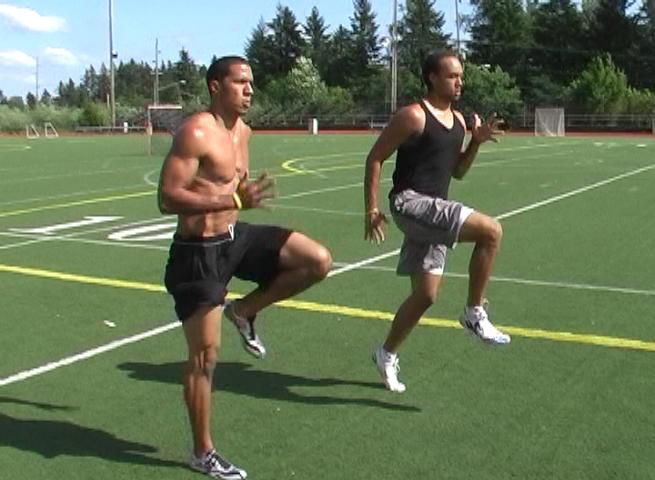
Related: 6 mental tips for long runs
#5 Fuel your body properly
As your mileage increases, you need to fuel your body appropriately. Your muscles need additional fuel to power you through a longer run.
Your performance on a long run suffers without proper fuel. Not fueling your body properly can put you at greater risk of injury and may affect your immune system.
If you run early in the morning, it is important to eat adequately both on the morning of and leading up to the run.
You don’t have to eat a large meal, but the goal is get a burst of energy to get you started.
Some examples of food to eat before your run include:
The key is to get a good mixture of carbohydrates, glucose (a form of sugar), lean protein and fats.
The amount you eat will depend on how much time you have before you start your run.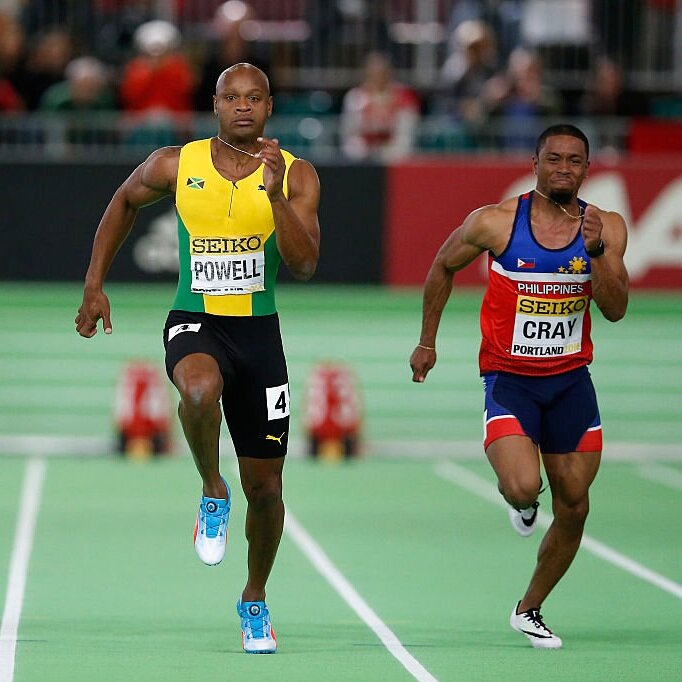
If you have 30 minutes or less, the focus should be on a carb-rich snack. If you have between 1-2 hours, the focus should be on carbs, lean protein and fats.
It’s also worth noting the importance of fueling your body after a run.
A good post-recovery fuel plan optimises recovery and muscle repair. Once your run is over, eat a meal within two hours and try and include:
Related: 6 simple and delicious porridge recipes for runners
#6 Carb load
Carb loading is a key component for being able to run for longer without getting so tired.
Essentially, the process of carb loading is all about giving your body the extra energy reserves it needs to keep you going on your long runs.
Carb loading is most beneficial for runs that are 90 minutes or longer, and normally starts up to six days ahead of the run.
It is ideal for any energy-depleting exercise like running or cycling, where you know you’re going to be burning off a lot of energy in a short space of time.
In the week or so ahead of your long run, if you carb load you can expect to eat an extra 1-3 servings of carbohydrates.
The types of carbs you could eat include:
Be warned, however, carb loading doesn’t give you a free pass to eat whatever you like, so choose your food options wisely!
Keep eating your greens, continue to consume lots of fruits and veggies, and stay hydrated.
Related: 4 common pre-run eating mistakes you’re probably making
#7 Stay hydrated
The goal of hydration is to reduce fluid loss through sweat, prevent fatigue, stop your muscles from cramping and prevent dehydration.
A simple way to tell if your body is dehydrated is to check the colour of your urine.
It can be difficult to get the right amount of water before a run as you don’t want to be nipping to the loo every two minutes.
My advice is to have at least one glass of water before you start your run – a sports drink is also good for giving you a burst of glucose before your run.
Don’t forget to drink lots of water after your run to replace some of the fluids lost during the run (through sweat) and to rehydrate the body.
Related: Hydration and running performance: 4 key hydration tips for runners
#8 Focus on your form
Proper running form is all about running in the most efficient way possible.
Running form looks at everything from your posture and cadence to your arm swing and foot strike.
Learning how to run properly can improve your athletic performance, it can also shave valuable seconds off your race times.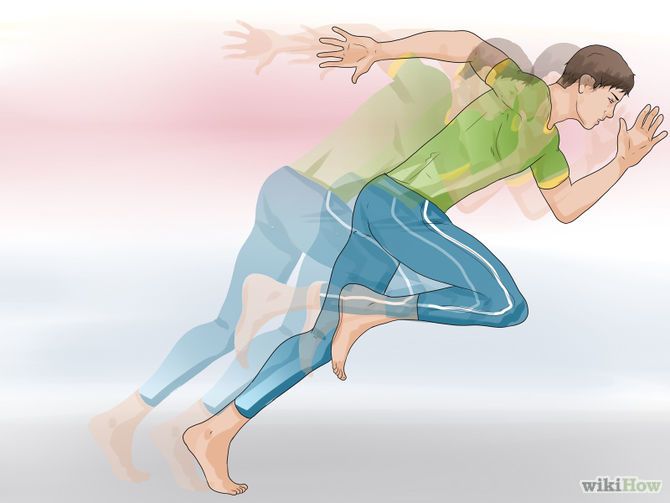
Check out my guide on proper running form to learn more about how to adopt good form during a run.
Share
526 shares
Click here to watch How to Run the 800 Meter
Hi, everybody. Welcome to Stillwater High School. This is the human performance lab that I have and my physiology classroom here in Stillwater, Minnesota, and I’d like to talk to you today about how to run the 800 meter and a little bit about developing a race plan. I’d like to thank my technical crew here, Marcus and Matty. I’d like to also point out that I’ve got some distance crew here, some of my 800 meter runners and some of my milers who are also gonna watch today.
At the end of the presentation, we’ll give you a web address that you can reach me at if you’ve got questions, if you wanna buy some training things. Whatever you need, I’m here for you, and I operate a question and answer board, so if you’ve got things, make sure you contact me, and again that address will pop up a little bit later. Now, talking about the 800 meters, and that’s where I really wanna concentrate today is on the two lapper. I don’t wanna talk much about training. I wanna talk about a plan for running the 800 meter.
Now, why would you wanna do a plan? Well, anything that’s worthwhile in life has got a plan, and the racing plan for the 800 meters should serve two purposes. Number one, it should be a means of action. It should be a plan of your actions, rather than a predictor of your results. The time will take care of itself. The place will take care of itself. This is more processing rather than results.
Number two, a good racing plan should psychologically prepare the athlete for the physiological processes that are going to occur during the race, which should be the most stressful time in any athlete’s life if the actual competition is the race and we prepare them so well physically that it really serves its purpose to have a good psychological racing plan, something that’s set up ahead of time that might anticipate some things that may go wrong and just a good time for the coaching athlete to discuss what their racing intentions might be. Now, let’s profile the 800 meters before we get going. What is it? Well, technically it’s an endurance event. Now, I know there’s some talk amongst coaches that really is just a long sprint. You won’t get very many physiologists to agree with that because of the strong aerobic component in the 800 meters.
We group it in with the other endurance events. Now, by aerobic component, we mean that a certain amount of the energy has to be supplied through the aerobic system as well as a contribution from the anaerobic system. You could walk it. You wouldn’t have any racing success that way, but that would be purely aerobic. To get up to racing speed, you’ve gotta have some sort of contribution from both of the energy systems.
You could walk it. You wouldn’t have any racing success that way, but that would be purely aerobic. To get up to racing speed, you’ve gotta have some sort of contribution from both of the energy systems.
Coaching Resource: Speed Development for Distance Runners
As it turns out, the physiologists have done the work for us and they’ve determined that the 800 meters, which is two laps, is about 50 percent aerobic and 50 percent anaerobic. Now, what that means practically is this. It will take about 90 calories’ worth of energy to run the 800 meters. Now, those of you that have a pasta meal the night before a race and load up on pasta and have all of those various team bonding things and you need to load up on all this pasta, please realize that the 800 meters and the energy required is about equal to three-fourths of a banana, so you really don’t have to load up too much for it. It’s 90 calories, of which 45 calories will be processed in the mitochondria, thus in the aerobic system, and 45 calories will be processed anaerobically.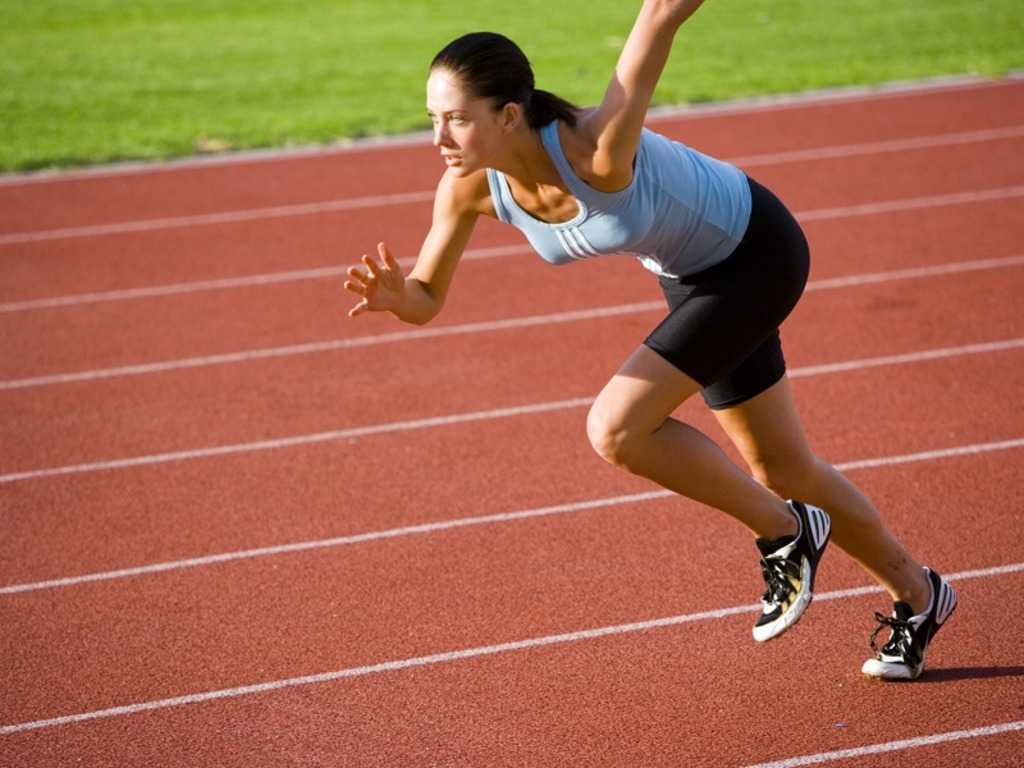 That is, outside of the mitochondria, so that’s the physiological features of it.
That is, outside of the mitochondria, so that’s the physiological features of it.
The athletes that will run this race are varied. We’ve got sprinters that move up. We’ve got middle distance runners, and we have distance runners that may move down. You need to be able to address all three, and when I get into a general racing model, I’m not going to discern between those three, but as you train those three, you need to realize what type of athlete you’re training. Is it the true middle distance runner? Like historically some of our more famous ones have been Sebastian Coe and Wilson Kipketer who were probably just as successful in the mile as they were in the 800 meters.
Their volume is probably 40 to 50 miles per week. They’ve got a very high allometric model of VO2max to running economy and then you’ve got a long distance runner that’s moving down, the Peter Snell type, the Steve Ovett type who is very comfortable running more than 60 miles a week, spends a lot of time on the endurance component, has very high VO2max, that sort of runner.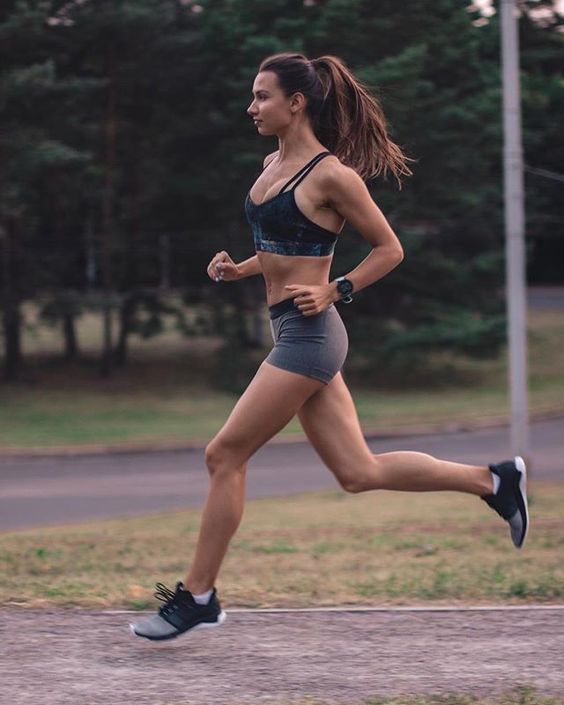 Then the third type, which we are seeing more and more commonly is the long sprinter that’s moving up. They don’t have the highest VO2max in the bunch, but they are very economical. They’re able to have a very strong vertical component.
Then the third type, which we are seeing more and more commonly is the long sprinter that’s moving up. They don’t have the highest VO2max in the bunch, but they are very economical. They’re able to have a very strong vertical component.
They’re probably forefoot strikers, which is very metabolically expensive. They probably don’t have a long run in their normal training menu. They’re most comfortable with a training volume probably somewhere around 30 miles per week. Those are the types of people that you’re gonna find in this race, so as you train them, you of course are training for their faults and deficiencies rather than their strengths, so you’ll need to address that in training and that stuff is available through some of the things I’ve written and how to train the middle distance runner, which we’ve got as a class that you can purchase the complete track and field, so as you set up the racing plan, you need to discuss with the athlete what their competition is, who they’re racing, and what type of runner they are, although that’s probably been discussed many times with them, specifically since they’re your athlete.
Let’s talk about the race itself. How do you distribute the energy? How are these 90 calories distributed throughout the two laps? How do you set up a timeframe that you allow them to be able to successfully hit? Certainly you don’t want them to go out as absolutely fast as they can. You wanna give them some strength in order to finish.
How do you set it up? Well, there’s been studies done. A lot of it’s come out of South Africa where we’ve looked at the last 26 world record holders in the 800 meters and it turns out that 24 out of the 26 had a faster first lap than a second lap, and it’s been significant, at least a couple of seconds. That’s generally how the racing model is set up, that the first lap is two to three seconds faster than the second lap.
Now, how might you set that up practically with your athlete? I’ve got an example here of an athlete actually sitting right here in the crowd. He’s got a date pace today of 400 meters. He can run in 53. 2 seconds. His date pace here – and that’s what DP stands for, is date pace – in the 800 meters currently is 157.1.
2 seconds. His date pace here – and that’s what DP stands for, is date pace – in the 800 meters currently is 157.1.
Now if I’m gonna set up a racing model for him, the first 400 meters should be run at 93 percent of his date pace, 400 meters, so our goal for him is to get through that first lap in 57.3 seconds. He can certainly run faster than that, but the 800 meters isn’t about running one 400. It’s being able to repeat 400’s. That’s the number you’re shooting for.
The second lap, again, revealing what the 53.2 date pace, 400 – 89 percent is your goal on the second lap, so when you divide by .89, he is right under 60 seconds, 59.8. Add the two. That’s how he should achieve the 157.1. Now interestingly, and Wilson Kipketer, who followed Sebastian Coe and had the 800 meter record for so long before David Rudisha broke it, Kipketer actually set the world record three different times. His second lap on all three was about the same, and as he brought the 800 meter record down, it all came out of the first lap, so he was riding his first lap harder. His second lap remained about the same.
His second lap remained about the same.
If you look at the Olympic Games, in the last four Olympic Games we’ve got data on, in the 800, the 1,500, the 5,000, and the 10,000, every one of those races over the last four Olympics on the men’s side, the last 400 meters was run in the high 52 point range. That’s the critical zone in the race, is the last part of it and no matter what the race, the Olympic games, which is usually a tactical race, they’re able to close in high 52 seconds. Even the 800 meter, which is in the Olympics kind of traditionally more tactical than other European races, even going out somewhat slower than normal because it’s so tactical in the Olympics still causes that second lap to not be as fast as the first lap. Look for about a two to three second slowdown between the first lap and the second lap. Let’s set up the race.
Here we go. I’ve picked out seven critical spots in the two laps, and that’s the things that need to be discussed today and you take it to your athlete. Let’s talk about the start. I’ve got three athletes here: red, green, and blue, and of course in the inner meters they start in lanes. It’s a standard start, and they’re gonna run the first portion of their race in lanes until they get over here into the backstretch, which is a cut line, and from this cut line they’ll move into lanes and this is really what separates the 800 meter from the 400.
Let’s talk about the start. I’ve got three athletes here: red, green, and blue, and of course in the inner meters they start in lanes. It’s a standard start, and they’re gonna run the first portion of their race in lanes until they get over here into the backstretch, which is a cut line, and from this cut line they’ll move into lanes and this is really what separates the 800 meter from the 400.
The 400 is just in lanes and you basically run as hard as you can, but you’re in lanes all the way. The 800 meter is not quite as hard as you can, but it’s still pretty hard, but you move shoulder to shoulder and that’s what really makes the 800 meter so dynamic and so interesting is the shoulder to shoulder competition rather than sitting in your lanes like they do in the 400. Well, let’s look at the situation here. Let’s say you’re red, green, or blue. Which one’s better?
Preferred lane is in the middle of the track, so the green dot is no doubt preferred, but it’s got some pitfalls.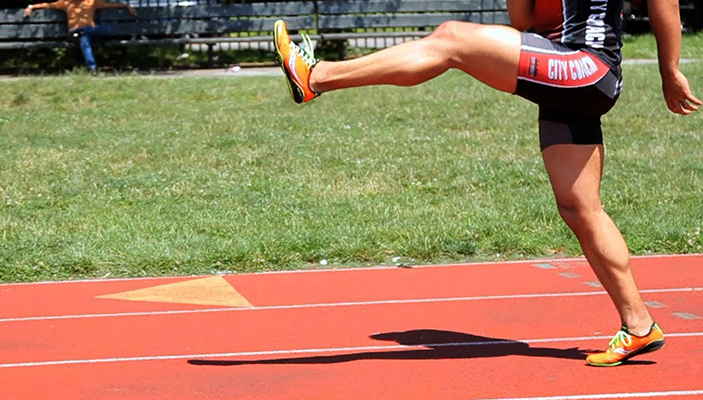 It’s got a lot of advantages, but it’s got some pitfalls. Blue has got some advantages being on the outside. Also got a few pitfalls that need to be discussed and red of course has got probably more pitfalls than advantages and they need to be addressed as well, so let’s talk about getting going here. As the gun goes off, they’re in lanes. Your first five steps should establish your pace.
It’s got a lot of advantages, but it’s got some pitfalls. Blue has got some advantages being on the outside. Also got a few pitfalls that need to be discussed and red of course has got probably more pitfalls than advantages and they need to be addressed as well, so let’s talk about getting going here. As the gun goes off, they’re in lanes. Your first five steps should establish your pace.
Now, the difference between the 800 meter and other longer distance races has to do with a lot of physiology, but a lot of psychology as well. On the psychological side, I like to tell my distance runners that in the longer races, it’s all about concentration. Because you’re out there so long in the two mile, the 5k, that’s a lot of concentration. In the 800 meters, it’s about awareness more than concentration. You have to be completely alert.
That’s why I don’t run some guys on my team in the 800 meter very often. They’re just not alert runners. They’re just not aware of what’s going on around them and thus just are tactically very poor 800 meter runners. I might stick them up in a longer race where maybe their concentration’s a little stronger or at least there’s more room to make up for errors that might occur. The real problem with the 800 is if there is a problem, there’s no time to make up for it.
They’re just not aware of what’s going on around them and thus just are tactically very poor 800 meter runners. I might stick them up in a longer race where maybe their concentration’s a little stronger or at least there’s more room to make up for errors that might occur. The real problem with the 800 is if there is a problem, there’s no time to make up for it.
Let’s get going, and these first five steps are pretty hard and then you’re in your pace, and you should be completely sensory aware of sounds you hear, people’s steps, people’s breathing. You should be able to sense people on either side of you. Maybe on the periphery of your vision you can see people. You’re trying to come around the corner aware of where your competition is. Now, when you get over here, this seldom happens, but I’ve drawn it this way, all three being equal.
Red has the problem here of the whole pack collapsing in on them, on this person in this position. Green has the problem of being boxed in on both sides. They will be set up according to what either on either side of them do. Blue has got an advantage of not having anybody to their right. This position also has the advantage of making a nice, smooth transition along the backstretch.
They will be set up according to what either on either side of them do. Blue has got an advantage of not having anybody to their right. This position also has the advantage of making a nice, smooth transition along the backstretch.
Now, a lot of things that happen in races with younger people, problems and things that stem on the backstretch, deal with people that make the cut just too quickly. They just veer right in, and I know it’s something you talk about with your athletes. It’s a very simple concept, but they seem to forget it in races. You just absolutely don’t have to take a sharp left turn. You want to bring your body very slowly in to the inner rail along this area from the cut mark to the 200 meter mark.
Red has to have elbows out a little bit, protecting space. Not necessarily elbowing people, but make yourself bigger. Make yourself bigger, and then people won’t intrude on you. If this is a race that was seeded properly, green should be the best runner and as green gets out here, if it was seeded properly, green should kind of be the one that’s dictating the cut to the curve, because blue certainly can’t cut until green’s cutting as well. Now, when you get here, when you get to the 200 meter mark, the goal is to be a good racing position.
Now, when you get here, when you get to the 200 meter mark, the goal is to be a good racing position.
Now, that doesn’t mean pinned against the rail. That’s perhaps the worst place to be, and that’s what red really has to watch for, are people pushing into the rail against them. Ideally what you wanna be is on the outside of lane one, outside the line of lane one, just off the shoulder of the leader. Now, if you are by far the best runner in the field, then you should be the frontrunner. You don’t have to key off anybody. Just go, but if this is a competitive race, by the time you get here, you’ve got the front pack and you’ve got the leader and the challenger and the prime challenger just off the right shoulder, just back a touch, but on the outside right shoulder of the athlete, and that’s the best position to be in.
That’s why it’s a little bit better to be blue than red, but it’s great to be green because that gives you the clearest path down here. Now, this guy is going to run 57.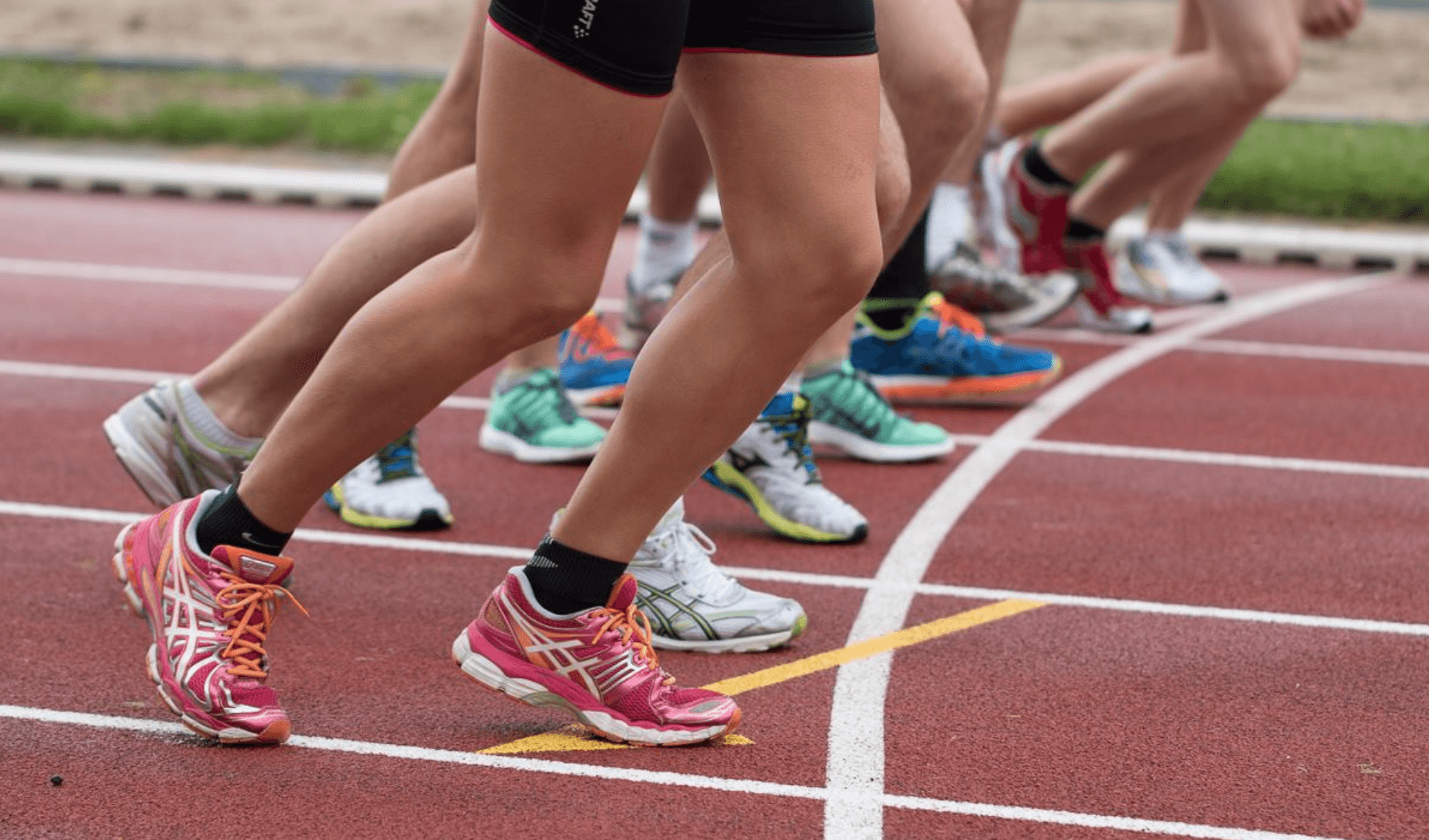 3 for the first 400. Well, what should you be here at the 200 meter mark? If you’re gonna be 57.3 over there, you’re gonna be somewhere high, 27th, maybe 28 at the 200 meter mark and then come in in 29 on your second 200 meters, which would be area D here from the 200 meters to the 400 meters. As you get in front of the crowd, so you’re about just under 28 to here and then about 29 to there, staying in position, staying relaxed, deciding when you’re gonna make your move.
3 for the first 400. Well, what should you be here at the 200 meter mark? If you’re gonna be 57.3 over there, you’re gonna be somewhere high, 27th, maybe 28 at the 200 meter mark and then come in in 29 on your second 200 meters, which would be area D here from the 200 meters to the 400 meters. As you get in front of the crowd, so you’re about just under 28 to here and then about 29 to there, staying in position, staying relaxed, deciding when you’re gonna make your move.
Because of the speed here, your leaders are starting to separate from the other people in the race and you’re just at this point real relaxed. As you pass the 400 meters, this is kind of a graveyard for 800 meter runners. This is where the pace generally shows. You’re a little anxious because of the crowd in the front stretch. You’re trying to get up to your split time. You’re calculating your split.
You’ve maybe mentally separated the race into two 400 meter repeats, so as you cross the start/finish line for the first time after the first lap, there’s a tendency for all athletes just to let down a little bit, and as you go around the corner, in a lot of races you’ll see the path reforming. It might’ve been strung out a little bit coming down the friendship, but now it’s coming back a little bit. It’s more back in a path, because the leaders relaxed a little too much on this corner. Now, this is an excellent place to make a move, to make a strong move just as you’re coming off the corner, approaching the cut mark. A lot of people are gonna wait over here till the last 200 meters.
It might’ve been strung out a little bit coming down the friendship, but now it’s coming back a little bit. It’s more back in a path, because the leaders relaxed a little too much on this corner. Now, this is an excellent place to make a move, to make a strong move just as you’re coming off the corner, approaching the cut mark. A lot of people are gonna wait over here till the last 200 meters.
If you’re the best runner, you’re no doubt out of the problem, but if you’ve got a real competitive race going here, this is a prime spot, just over the cut mark, to make your move and make a strong move. Make a move they can’t come back on, because if you make a move and are able to be in good position here, they’ve got the corner to deal with and not a lot of people are gonna take the effort to try to get by you on the corner with 200 meters to go. They’re gonna wait until you’re down to 100 or 90 meters so you can gain an advantage on this spot and it’s just a kind of an underappreciated part of the race is people are preparing for the finish, but you’ve gotta be psychologically strong and it’s gotta be part of your plan. I mean this is where you’re gonna pull the trigger right in there. That’s been pretty much predetermined, that no matter where you are in the race, that’s where you’re going to make a psychological and a physical move on your competition. Then you get over to area F, which is the last curve, and people will tuck in.
I mean this is where you’re gonna pull the trigger right in there. That’s been pretty much predetermined, that no matter where you are in the race, that’s where you’re going to make a psychological and a physical move on your competition. Then you get over to area F, which is the last curve, and people will tuck in.
The last bit of jostling will occur here. Everybody’s fatigued. You’re starting to recruit muscles that you haven’t used earlier in the race, and that’s kind of that rigor look that you get when 400 to 800 meter guys finish. It looks like they’re in some sort of rigor mortis setting in. They call it rigor.
We call it rigor, but really what’s happening is your big muscle groups have fatigued and now your body is relying on ancillary and smaller muscles to accomplish the task because your will is still there. It’s just there’s so much acidosis. The pH in your inner cellular fluids that has crashed and you’ve got what we call fatigue setting in and you’ve got to maintain your form. You’ve gotta continue to run high in posture. Don’t go to the dog paddling right around this last corner.
You’ve gotta continue to run high in posture. Don’t go to the dog paddling right around this last corner.
Keep your thumbs up. Keep your hands relaxed. Clenched hands aren’t gonna help. That’s gonna further fatigue muscles in your upper body, and your arms don’t really make you a faster runner, but they certainly will slow you down, so you wanna keep your upper body as relaxed as possible when you’ve got the incredible amount of fatigue setting in. The last 90 meters is about foot speed, what you have left. What’s your maximum speed?
Want Every 800m – 1600m Workout For The Entire High School Season … January Through Nationals In June?
Go here: Training Model for High School Middle Distance
What have you trained over the last components of your training scheme to further the foot speed and maintaining your form, maintaining your relaxation, keeping your thumbs up, running tall, keeping your weight out on the front of your spike place, being a midfoot to forefoot striker and continuing to run through the finish line. Not run to the finish line, but run through the finish line, being absolutely aware of what’s around you. At this point, your intent more on your competition than your time and run past the start/finish line and then collapse and do whatever you do when you finish your race. That’s how you run the 800 meters, so if you’ve got questions, make sure you get a hold of me. Get a hold of Latif. He’ll get the questions to me, and enjoy your day at the track. Thank you.
Not run to the finish line, but run through the finish line, being absolutely aware of what’s around you. At this point, your intent more on your competition than your time and run past the start/finish line and then collapse and do whatever you do when you finish your race. That’s how you run the 800 meters, so if you’ve got questions, make sure you get a hold of me. Get a hold of Latif. He’ll get the questions to me, and enjoy your day at the track. Thank you.
=-=-=-=-=-=-=-=-=
We value your privacy and would never spam you
Like Loading...
Posted on by Scott Christensen in Mid Distance1,053 comments
Tagged as 800 meter training, 800 meter workouts, mid distance, mid distance workouts, middle distance training, middle distance workouts, scott christensen
 He won the 1997 High School National Championship and his squads have captured multiple Minnesota State Championships.
Scott has coached 13 Minnesota State Championship-winning teams and 27 individual Minnesota State Champions.
He was the USTFCCCA Endurance Specialist School junior team leader for the World Cross Country Team in 2003 and the senior team leader in 2008.
Scott is a 14-year USATF Level II endurance lead instructor.
He won the 1997 High School National Championship and his squads have captured multiple Minnesota State Championships.
Scott has coached 13 Minnesota State Championship-winning teams and 27 individual Minnesota State Champions.
He was the USTFCCCA Endurance Specialist School junior team leader for the World Cross Country Team in 2003 and the senior team leader in 2008.
Scott is a 14-year USATF Level II endurance lead instructor. Middle distance running gives us short but spectacular competitions.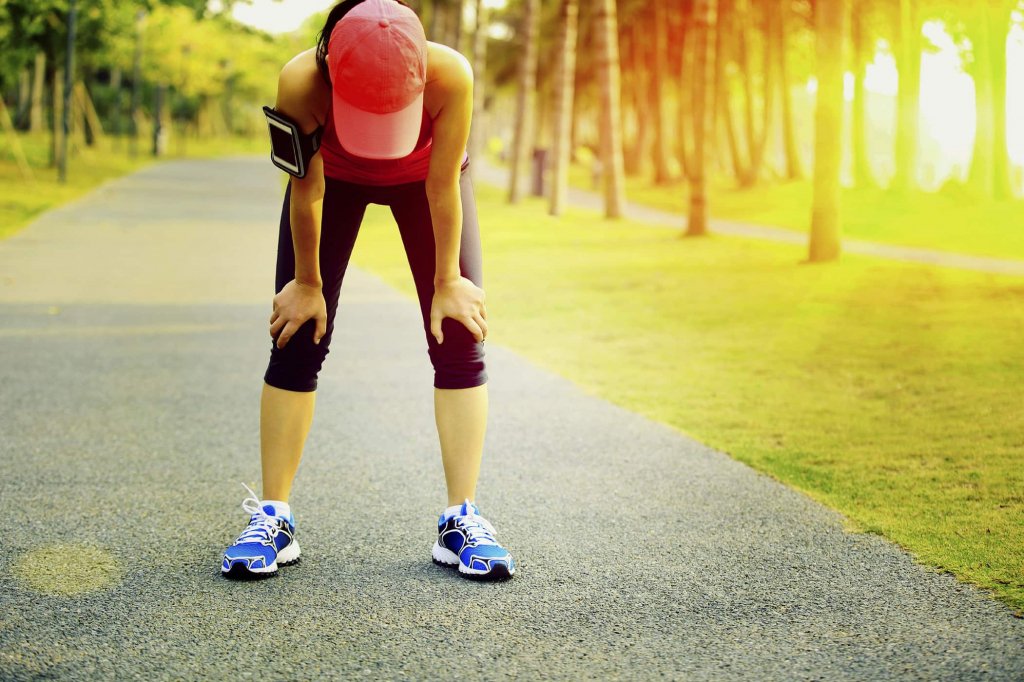 Athletes with strong physical and tactical readiness perform here. In this article, we will talk about running the 800 meters.
Athletes with strong physical and tactical readiness perform here. In this article, we will talk about running the 800 meters.
800-meter run is the shortest and at the same time the most difficult discipline of the middle distances.
This discipline requires athletes to skillfully combine sprint qualities and endurance. 800 meters need to run fast enough and, unlike the sprint 100 and 200 meters, for a long time. For professional athletes, this range is from 1:42 to 1:50 for men and 1:55-2:05 for women. It is no coincidence that the 800-meter run is called the long sprint.
The complexity of this distance is due to the fact that it places high demands on the athletes. Runners must have great aerobic and anaerobic power. The first is responsible for the body's ability to efficiently use oxygen. The second is for the body's ability to convert stored carbohydrates into energy without the participation of oxygen.
The 800m is an intense race.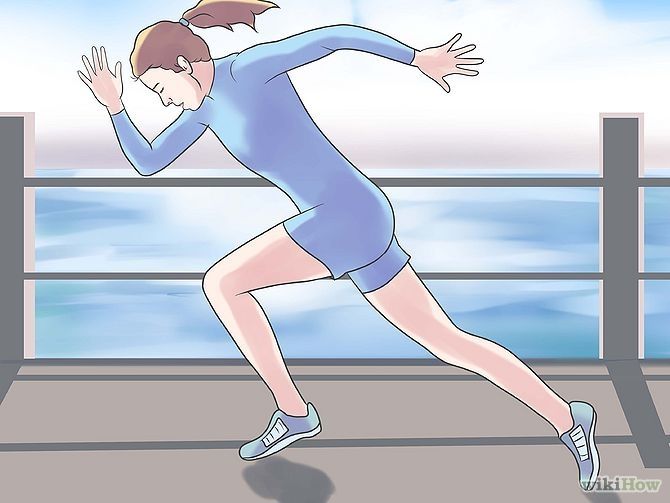 Success at this distance depends on the ability of the athlete to maintain a high pace, despite the increase in lactate in the body during the race. You must be strong enough to be able to work anaerobically the entire 800 meters.
Success at this distance depends on the ability of the athlete to maintain a high pace, despite the increase in lactate in the body during the race. You must be strong enough to be able to work anaerobically the entire 800 meters.
Top 800m runners incorporate a significant amount of strength training into their programs. This could be bodyweight work, free weights, or circuit training.
The running technique of the 800 meters is essential to a successful race. Professional athletes separately work out the technique of effective repulsion, the correct “folding” of the leg from behind, and many other nuances.
The training plan should have a good mix of speed and endurance training: intervals, thresholds and crosses. Interval work, in particular the fartlek, helps the athlete to change speed during the course of the distance.
Athletes also hone the technique of cornering, running in and out of a turn. The most important elements of the race are trained separately: starting acceleration and finishing acceleration.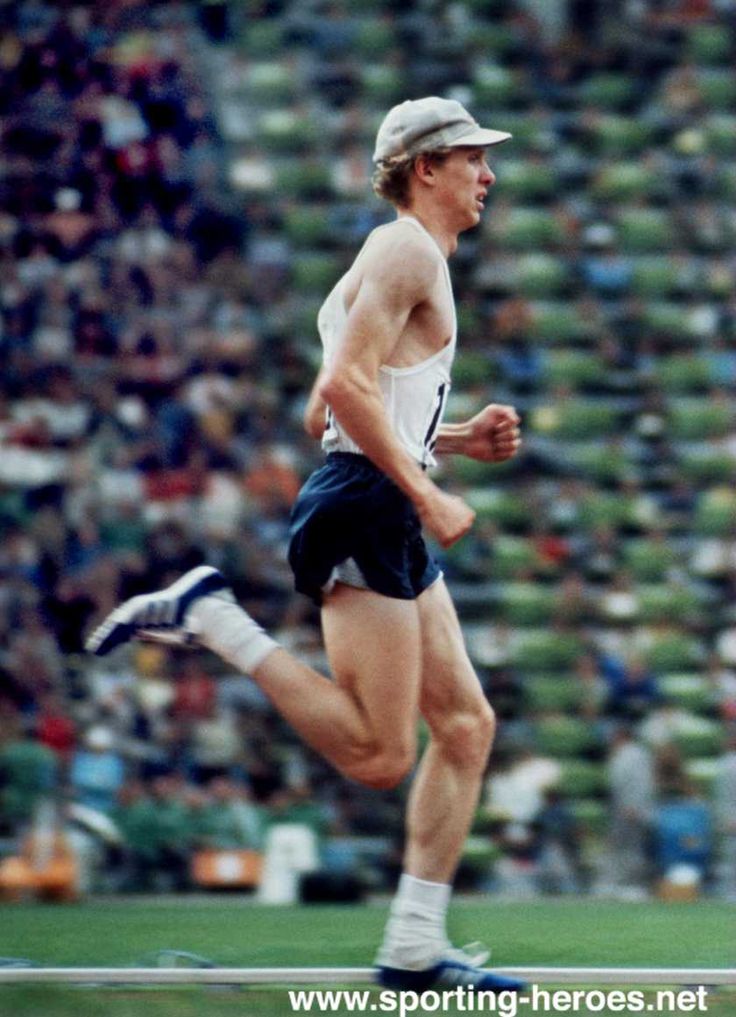
Much in the training plan depends on the goals and specialization of the athlete. There are 800 meters athletes who specialize in sprints - usually 400 meters, and there are endurance athletes who run 1500 meters and 3000 meters. The best combination in a training plan that will take into account these features will help you choose a coach.
Read on the topic: 1500 meters run: standards, records, famous athletes
The 800 meters discipline is included in the programs of all major athletics tournaments. She is at the Summer Olympics, the World Championships and the European Championships in Athletics. The 800m races are also held as part of the Diamond League competition series.
The 800 meters was included in the program of the first Olympic Games in 1896. At first, only men ran this distance. At 1928 at the Amsterdam Olympics, the 800-meter run was included in the program of women's disciplines. But not for long. After the Olympics, this distance for women was canceled because the race was considered too exhausting.
Only in 1960, at the Olympics in Rome, the 800-meter run was finally approved among women's disciplines.
At the Olympic Games, the World Championships and the European Championships, the 800m competition has a strict system for selecting finalists. Races are held in three rounds. First, there are preliminary races, then several semi-finals and a final race.
Athletes start from a high start and separate starting positions. After completing the first turn - 115 meters - the athletes go to the common track. Further success at a distance depends not only on the physical readiness of the athlete, but also on tactical confrontation.
Unlike long distance running, the result in middle distance running depends not only on the athlete's physical readiness, but also on the chosen tactics for a particular race. In a sense, running 800 meters is like chess on a treadmill, where the winner is the one who spreads his strength like a grandmaster.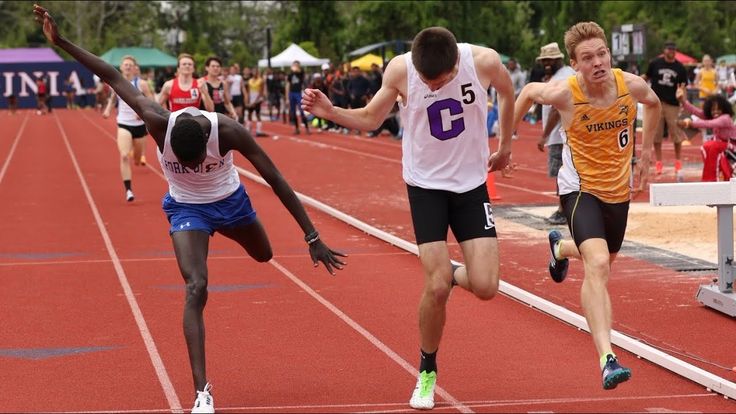
Normal running speed is as follows. The first 200 meters athletes develop a high pace. Further, they cover a section from 200 to 600 meters at a speed slightly lower than the starting one. The last 200 meters are sprinted.
There are various options for how best to distribute the forces over a distance.
Some runners prefer to lead the race from the start in order to control its progress. Runners caught in the middle of a group may be boxed in and prevented from making the final sprint.
There are positive and negative split tactics. With a positive split, athletes start quickly and complete the first 400 meters faster than the second half of the distance. This tactic was followed by world record holder David Rudisha. When setting a world record, he ran the first half of the distance in 49.28 seconds, and the second half in 51.63. Of course, for such a quick start, you need to have a strong reserve in order to save strength for the second part of the distance.
The negative split tactic assumes a moderately fast first 400 meters and a fast second lap with a final acceleration with 150-200 meters to go. As a result, the second half of the distance is faster than the first, and more strength remains at the finish line.
With a negative split, the athlete does not compete for a place at the start of the race. He may even be among the closing ones. The most important thing is not to let go of the leading group so that 200 meters before the finish line there is an opportunity to bypass it.
Yuri Borzakovsky at the 2004 Athens Olympics. Source: sport-express.ru The finishing spurt is the most important part of the 800m run. This is the time for the manifestation of the sprint qualities of an athlete. However, for this you need to save strength in the last quarter of the distance. It is not uncommon for runners to fall into a tactical trap. They can leave all the forces in the first half of the race or start the finishing acceleration too early.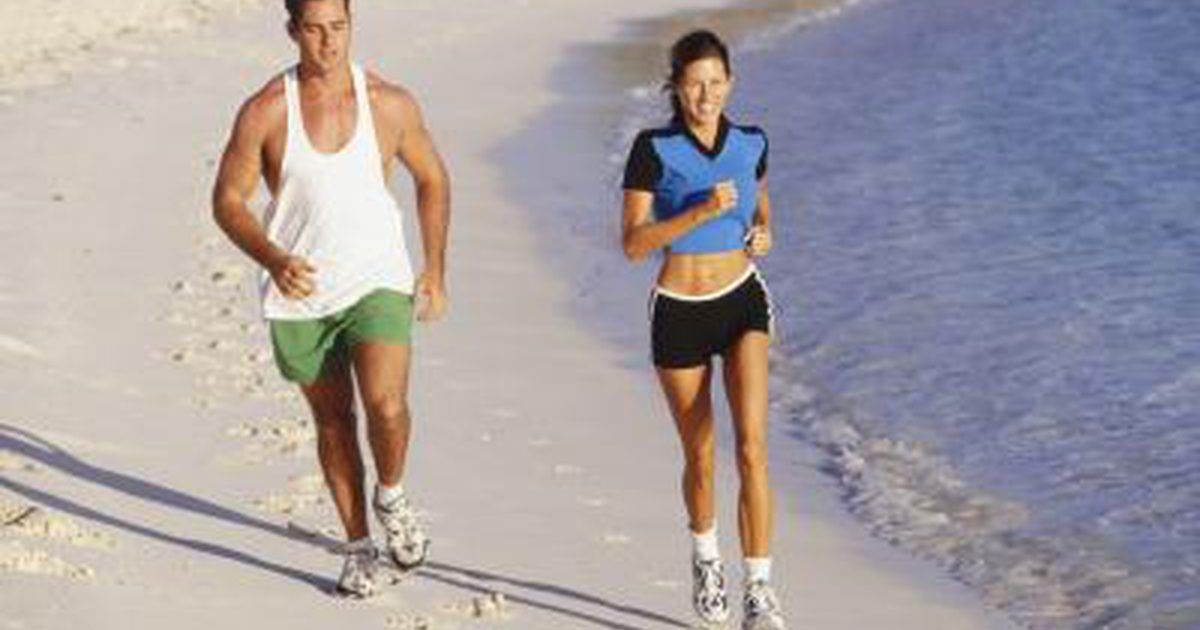
Olympic champion Yury Borzakovsky liked to use negative split tactics. During the 800 meters race at the 2004 Olympics, Yuri kept behind everyone. But in the last third of the distance, he turned on and, with 150 meters to go, undertook a brilliant finishing spurt, overtaking former world record holder Wilson Kipketer.
Interestingly, Yuri finished on the third lane, which means he ran 10-15 meters more. As Yuri admits, the first track was not a top priority for him, and extra meters were not a problem. The main thing is the ability to maintain an even rhythm.
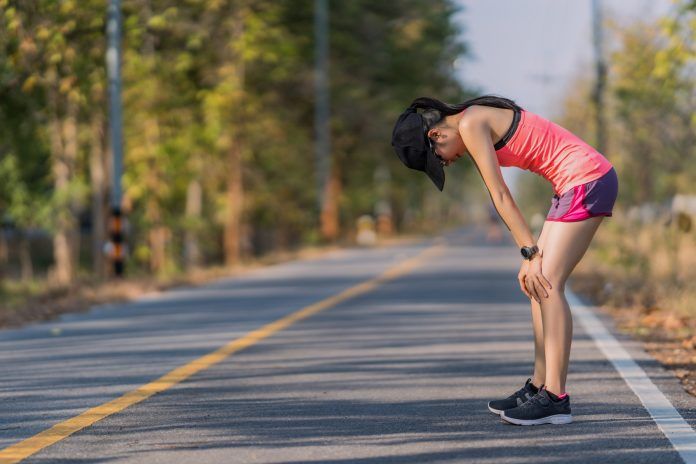 24
24 See also:
 11 (August 24, 1997)
11 (August 24, 1997) 50m to 100k world record charts
All-time best men's 800m results by David Rudisha (1:40:91), Wilson Kipketer (1: 41:11) and Sebastian Coe (1:41:73). The best result of Yuri Borzakovsky, set in 2001 in Brussels, is 12th in the world (1:42:47).
800m world record holder David Rudisha. Source: athleticsweekly.com Yarmila Kratokhvilova (1:53:28), Soviet athlete Nadezhda Olizarenko (1:53:43) and Pamela Dzhelimo (1:54:01) have the best results among women at this distance.
The distance of 800 meters was crown not only for Yuri Borzakovsky. Soviet and Russian athletes won and set records on it. By the way, there are 11 of our athletes in the current “world top list for all time” in the top thirty. Let's share their achievements.
In the 1950s and 1960s, Evdokia Vasilyeva, Valentina Pomogaeva and Nina Otkalenko repeatedly set world records at this distance.
At the 1960 Olympics in Rome, Lyudmila Shevtsova won gold in this discipline and set a new world record at that time. Olympic gold was won by Tatyana Kazankina (Montreal, 1976), Nadezhda Olizarenko (Moscow, 1980) and Svetlana Masterkova (Atlanta, 1996).
At the 1980 Olympics in Moscow, three Soviet athletes climbed the podium at a distance of 800 meters at once: Nadezhda Olizarenko, Olga Mineeva and Tatyana Providokhina.
And at the international competitions "Druzhba-84" our four of Nadezhda Olizarenko, Lyubov Gurina, Lyudmila Borisova and Irina Podyalovskaya set a world record in the 4x800 relay - 7:50.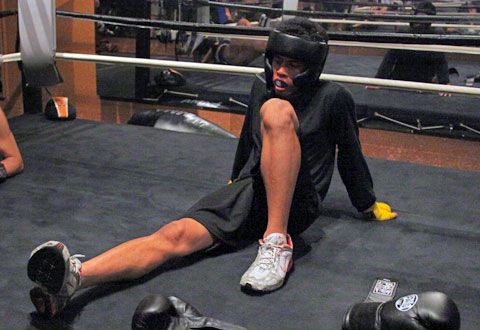 17. The record has been in place since 1984.
17. The record has been in place since 1984.
Read more: 3000 meters running: characteristics, standards and records
Read more interesting things about running and triathlon in our Telegram channel
Read more interesting things about running and triathlon in our Telegram channel
Health and love for sports are laid in childhood. It is at this time that you can and should instill in your child the basics of a proper lifestyle. An important role in...
The 800 meters run is considered to be a medium distance run, but it is considered to be a long sprint, since it is required to maintain a high pace throughout the entire distance.
For the first time this discipline for men appeared at the Olympics at the end of the 19th century (at the first Olympic Games of our time). For women, this distance was first included in the list of the Olympic Games only 32 years later.
This is an individual start race, that is, the participants start each from their own lane. Then, after the first bend, they can run on one inner lane (lane 1). The length of the turn is 100 meters.
800 meters is the shortest distance in the program of middle distance track and field competitions.
Content:
In this discipline, it is important to change the running technique when the body is already tired and the muscles are “clogged” with lactic acid.
Technique development affects all 4 stages of running:
It is customary to start the race from a high start. The athlete puts the push leg at the start line, the second leg is directly behind the push leg and stands on the toe at a distance of one foot. The legs are slightly bent at the knees, the center of gravity is moved forward.
Hand position: the arm on the side of the pushing leg is bent at the elbow and brought forward. The shoulder on the same side also extends forward. The other hand should be brought back.
It makes sense to develop maximum speed only to 60-70 meters of distance, because otherwise the muscles will acidify too quickly, and the athlete will get tired faster than is acceptable.
The main part of distance running is characterized by an almost vertical body position. The maximum deviation from the vertical forward is no more than 4-5 degrees. At the same time, the arms are bent and move at the same speed as the legs.
The maximum deviation from the vertical forward is no more than 4-5 degrees. At the same time, the arms are bent and move at the same speed as the legs.
When running along a turn, the athlete's body leans slightly towards the inside of the track, the right hand moves more actively and is also directed to the inside of the track. For the right leg, the heel is outward.
At this stage, the actions of the arms and legs are characterized by the most free, relaxed, sweeping movements.
More forward lean occurs and stride length increases after about half the race.
At this stage, running in its technique is more and more similar to sprinting. Some athletes practice throwing or snatching on the ribbon. For the successful completion of the final stage of the race, the final acceleration is purposefully trained.
To achieve results in the 800m, it is desirable to be consistent and systematic in training.
Exercises for training:
Analyze the features of running technique and watch videos on the topic. Then you need to conduct trial runs from 2 to 5 times at a distance of 60 to 100 meters. It is advisable to show the running technique at different speeds and from different angles, dwelling in detail on the features of the technique.
To master the running step technique by elements: mincing run, running and high leg raises, jumping run, as well as imitation of the position of the head, arms, legs, depending on the stage of the distance. It will be useful to run backwards. It is important that the planting of the foot is elastic for the subsequent explosive movement forward. You should train a gradual increase in the level of lifting the hip.
To master the technique of running in a straight line with constant and variable speeds. For this, walking with an emphasis on the main elements of the running step is useful. Work out the technique in slow motion, paying attention to all the technical features.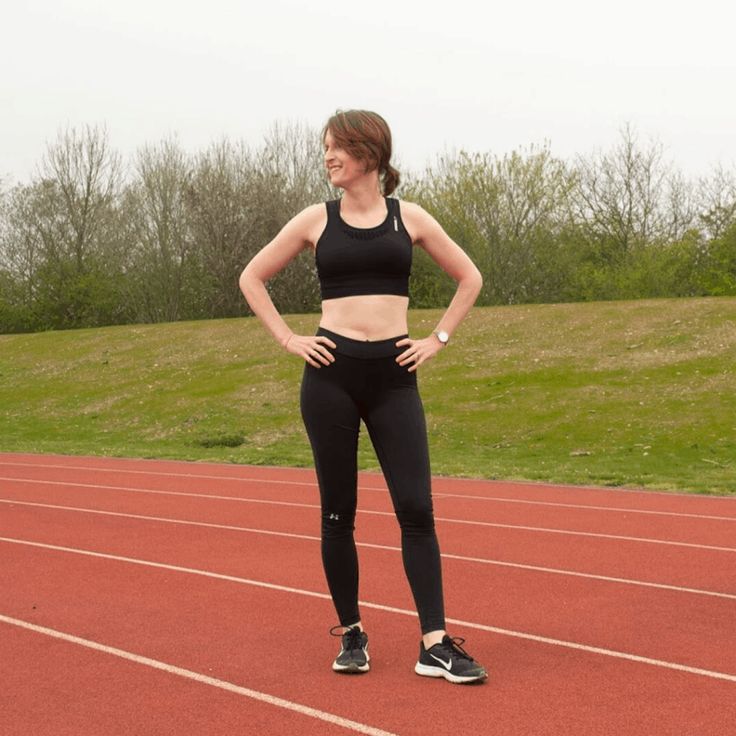 Slow running is also used, characterized by setting the legs one after the other, on the same line. At this stage, they are also engaged in running at variable speed for short distances up to one hundred meters, as well as training on simulators.
Slow running is also used, characterized by setting the legs one after the other, on the same line. At this stage, they are also engaged in running at variable speed for short distances up to one hundred meters, as well as training on simulators.
Learn the technique of running on a turn. Running with a change of direction is used, for example, a snake or in a circle, between objects, with a gradual increase in the radius of the circle, running from a straight line to a turn, and back. When performing these exercises, you need to pay attention to the slow tilt or straightening of the body. It is better to start exercises at low speeds, gradually moving to higher ones, at the same time you should increase the radius of the circle from 20-30 meters.
Practice high start and starting acceleration. Start one by one or in a group. Perform such acceleration for a given distance. Practice gradual acceleration and holding speed for 300 meters, as well as the transition to the first lane.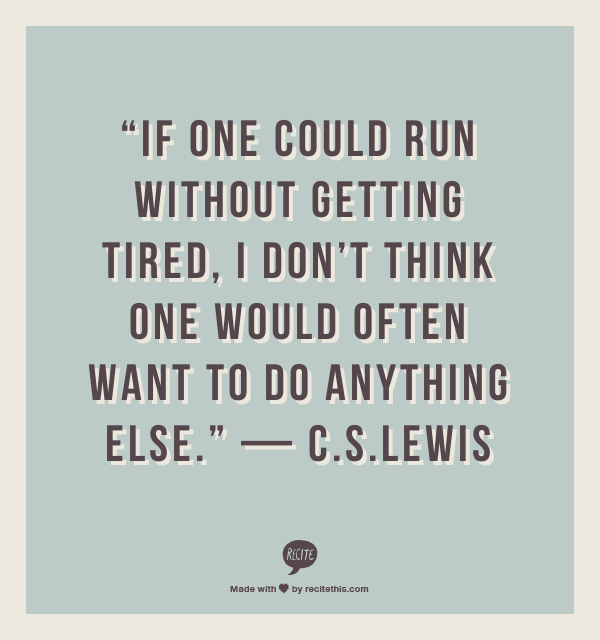 To study the characteristics of acceleration on a turn at the start one by one and in a group.
To study the characteristics of acceleration on a turn at the start one by one and in a group.
It is necessary to constantly improve the technique at all stages of the race. To do this, you can use the following exercises:
The first half of the distance is covered at a higher speed than the second half. For 150-200 meters before the finish line, athletes usually make a significant acceleration. To show a good result, professional athletes must run the first half of the distance in less than 50 seconds.
To be successful in this sport, you must follow the instructions of the coach regarding the training regime, speed regime and diet.